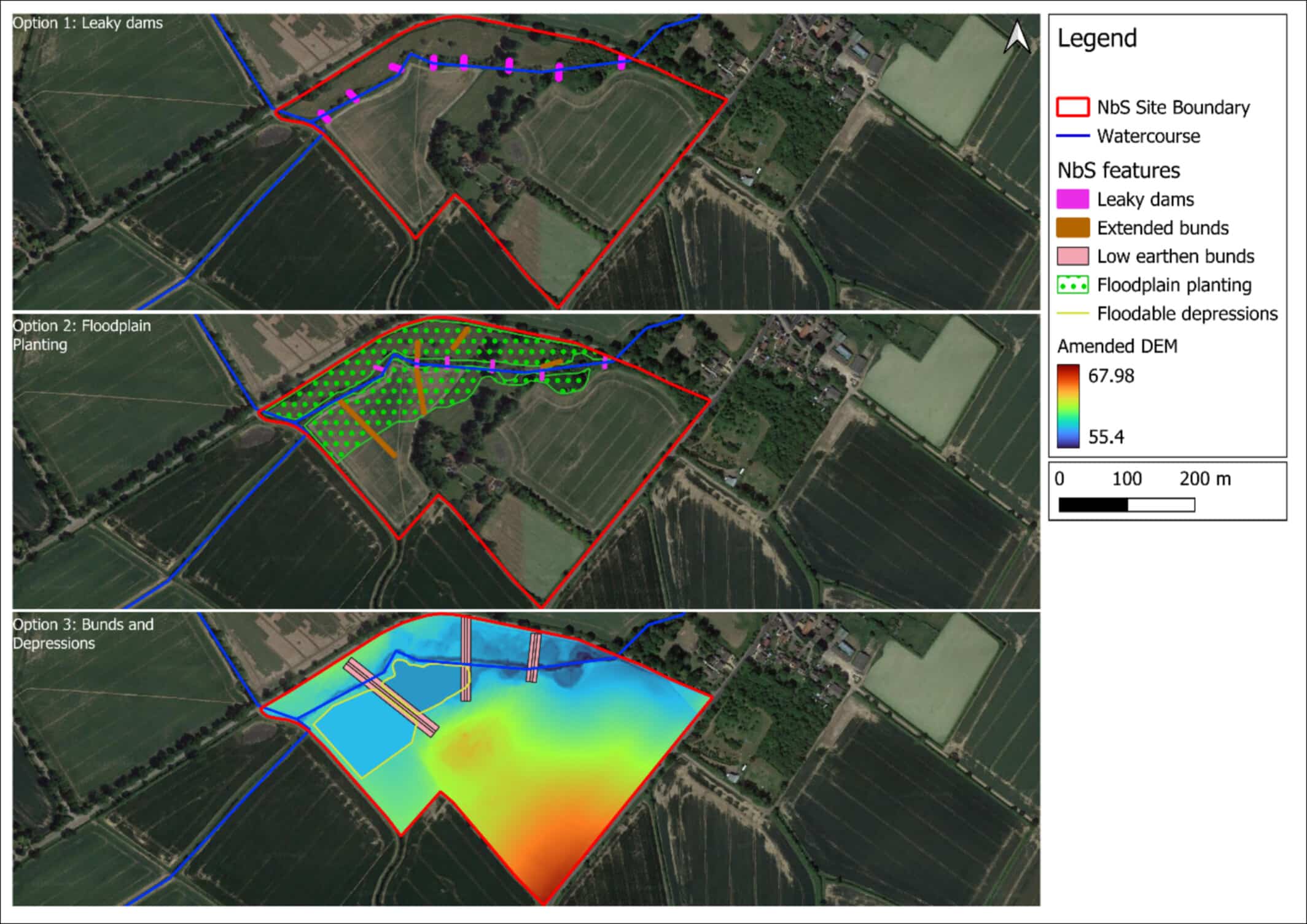New Research Published: Advancing Hydraulic Modelling of Nature-Based Solutions
We are delighted to share that our colleague, Amrie Singh, has recently published a research paper in the CIWEM-affiliated Journal of Flood Risk Management, titled “Sub-grid sampling of topography and land cover for hydraulic modelling of nature-based solutions”. The paper is now available online via the Wiley Online Library.
Developed in collaboration with Harry Mansfield (Create), Maria Pregnolato (TU Delft), and Nigel Wright (University of Birmingham), the study is based on a Flood Risk Management scheme in Riseley, UK, and investigates how sub-grid sampling (SGS) improves the accuracy of flood modelling and the performance assessment of nature-based solutions (NbS). By refining terrain representation within hydraulic models using TUFLOW software, the research shows that higher SGS frequencies provide a more realistic depiction of flow paths, velocities, and storage capacities – ultimately leading to more reliable flood risk assessments. However, this improved accuracy comes with increased computational demand, highlighting a critical trade-off for modellers and planners.
Amrie conducted this research whilst working as a Research Fellow at the University of Leeds, during this time she has also continued her role as a Flood Risk Consultant at Create, applying research insights directly to live projects. Her work on this publication is a testament to her ability to manage academic research and client requirements.
“Amrie effectively combines her academic work and consultancy support, ensuring that innovative, evidence-based solutions are embedded in Create’s approach to flood risk management. This enables us to deliver accurate, sustainable, and forward-thinking solutions to our clients. We are incredibly proud of her.”
Graham Sinclair, Technical Director (Water & Flood Risk)
From a policy and planning perspective, the study calls for regulatory frameworks and modelling guidance to adopt SGS as standard practice. Without it, NbS storage volumes may be overestimated, potentially triggering misclassification under reservoir regulations and creating unintended barriers to NbS uptake. The paper also stresses the importance of applying NbS at a catchment scale to maximise floodplain connectivity and flood resilience. While the research focused on the Riseley site, the findings have broader implications.
“This study highlights the need for modelling standards to evolve alongside our understanding of NbS performance. As we push for broader implementation of sustainable interventions, accuracy in model outputs becomes not just a technical issue, but a policy imperative.”
Amrie Singh, Flood Risk Consultant
Amrie will present these findings at the 41st IAHR World Congress in Singapore this June, helping shape global conversations around sustainable water management and nature-based approaches.
For more on the Flood Risk Management scheme at Riseley Brook, click here.





